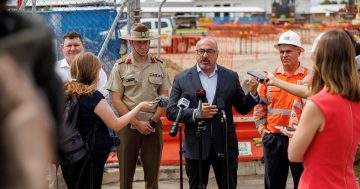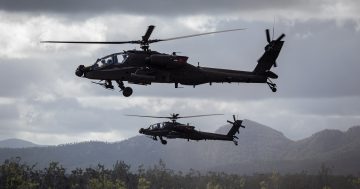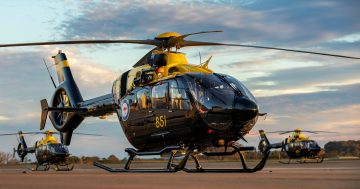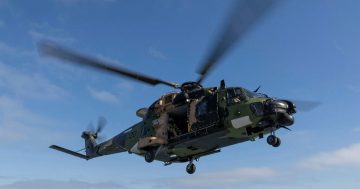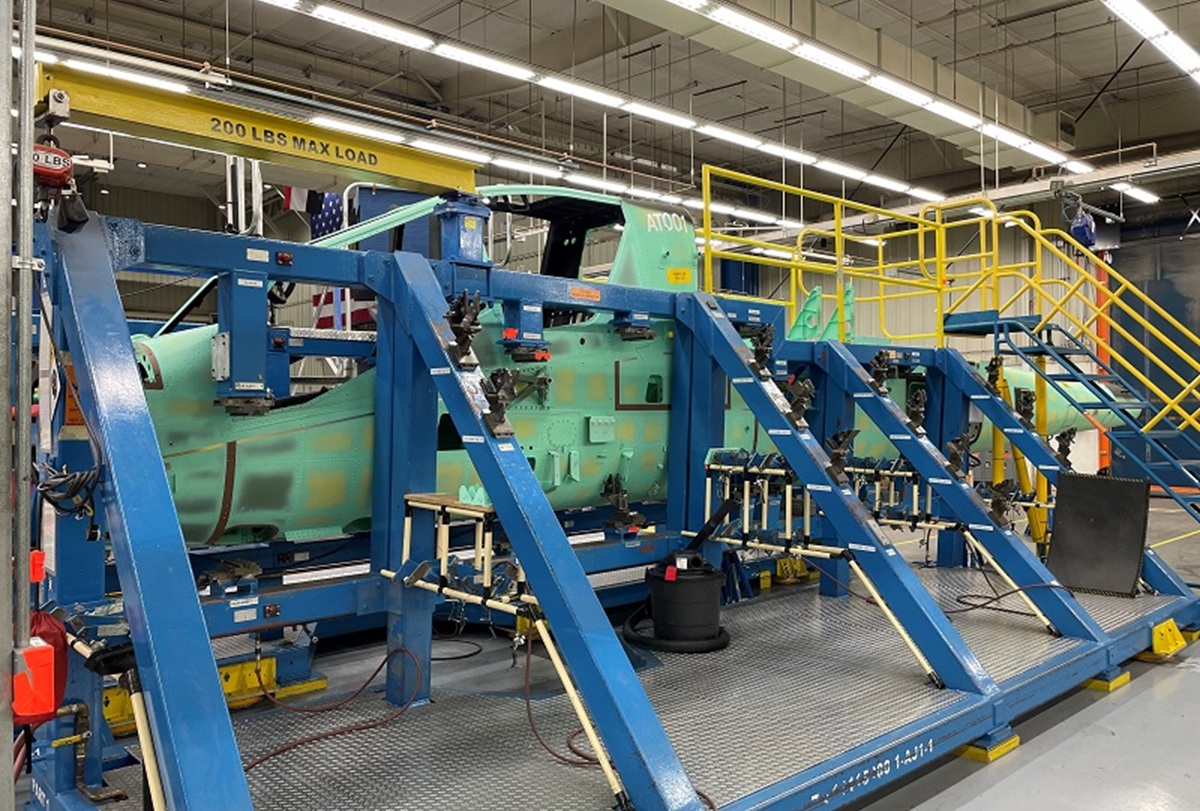
An Apache AT001 on Boeing’s Mesa, Arizona, production line. Photo: Boeing.
The first of 29 Boeing AH-64E Apache Guardian attack helicopters has entered final assembly in Arizona ahead of the planned delivery of the first four aircraft to the Australian Army later this year.
Being acquired under the Project LAND 4503 Armed Reconnaissance Helicopter replacement program, the Apaches will replace the army’s 22 Eurocopter Tiger ARH helicopters in service.
The Tigers are currently operated by No 1 Aviation Regiment (1Avn) based at Robertson Barracks in Darwin, while the Apaches will be based at new facilities in Townsville, Queensland. 1Avn is managing the transition to the Apache at Townsville while the Tiger’s capability is drawn down at Darwin and withdrawn from service in 2027.
The first Apache – designated AT001 – was photographed on the final assembly line in Mesa, Arizona, recently. Once it rolls off the line in June, it will be subjected to a rigorous flight-test regimen before delivery.
An initial operational capability (IOC) is scheduled to be declared in 2026, with all 29 aircraft expected to be delivered by 2030.
Boeing has built more than 2800 Apaches for the US and allied nations, and has remanufactured and updated many more.
Vice-president of Boeing Attack Helicopter Programs Christina Upah said the induction of the Australian Army’s first E-model Apache into final assembly marked the beginning of a new era for Australia’s defence and industrial capabilities.
“We’re proud to build and sustain the world’s most advanced, proven attack reconnaissance helicopter together with Australia, as we work to strengthen their fleet and deliver their first Apaches later this year,” she said.
While the aircraft are being purchased through the US Army as part of the US Government Foreign Military Sales (FMS) construct, several Australian companies have provided components for the aircraft and for future Apache build runs for other customers.
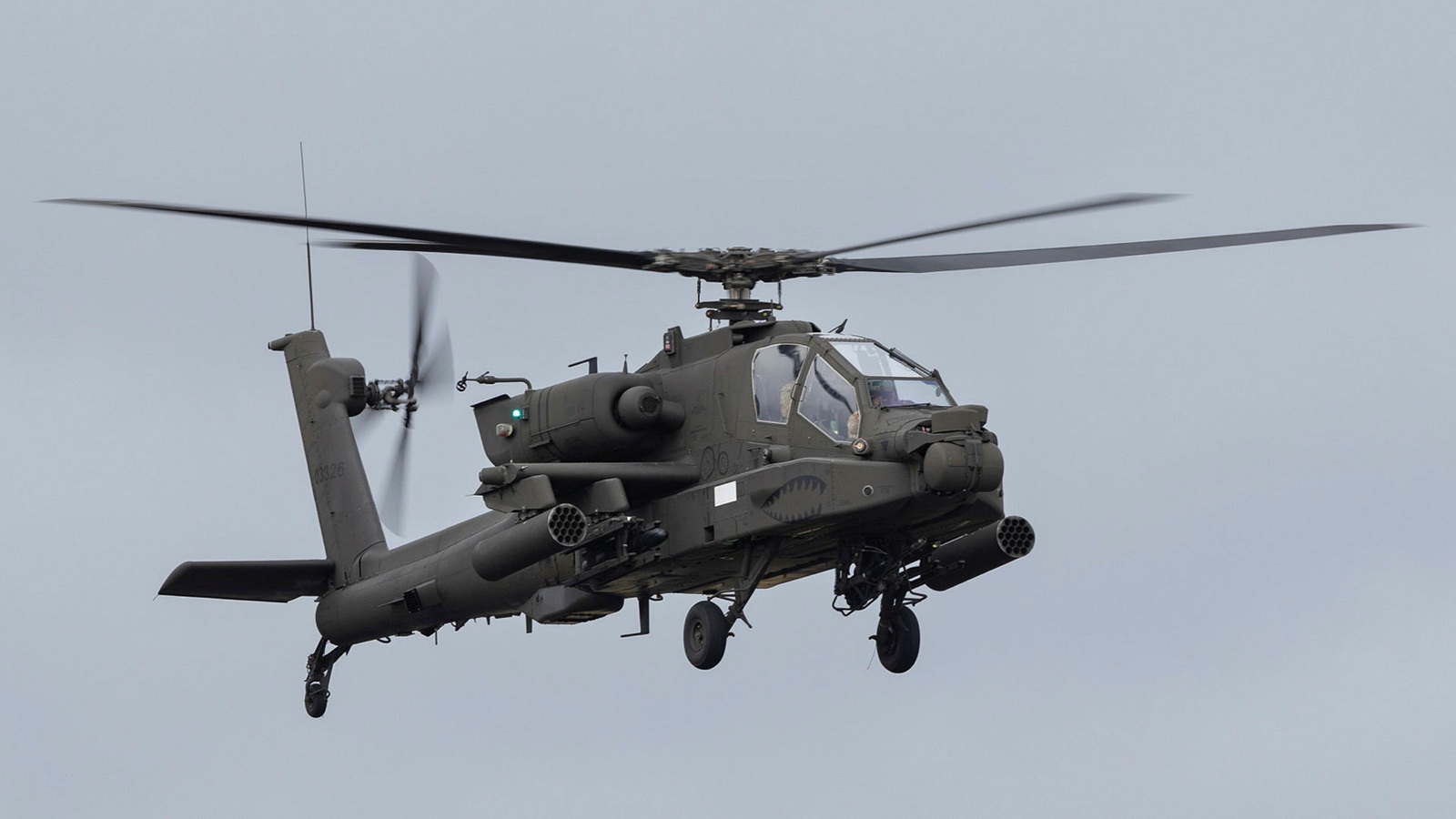
The US Army brought an AH-64E to the recent Avalon Airshow near Melbourne. Photo: ADF.
These include wire harnesses and electrical panels by Cablex, avionics bay shelving and other machined assemblies from Axiom Precision Manufacturing, vertical tail spar boxes by Ferra, and composites and fairings from Mincham.
Boeing Defence Australia was also last year awarded a seven-year support contract for the Apaches, which will see the aircraft serviced and maintained at Townsville and Oakey, near Toowoomba, Queensland. To this end, some 230 new engineering, logistics and administration roles will be created.
To whet the defence community and Australian public’s appetite for the arrival of the Apaches, the US Army brought an example to the recent Avalon Airshow near Melbourne. It was displayed alongside other Australian Army helicopters, including a CH-47F Chinook and a new UH-60M Black Hawk.
The acquisition of the Apache has been a controversial one, with some $5 billion allocated to the new aircraft and facilities, compared with an estimated $1.5 billion Airbus had proposed it would cost to upgrade and augment the current fleet of 22 Tiger ARHs.
In a paper published last April by the independent Strategic Analysis Australia thinktank, former senior analyst at the Australian Strategic Policy Institute (ASPI) Marcus Hellyer noted the high rate of loss of helicopters in the Ukraine-Russia conflict, and likened the Apache purchase to investing in coal-fired power stations.
“If your current assets are killing your business model, you don’t acquire more of the same that will be on the books for another 30 years,” Mr Hellyer said.
“Yet that is exactly what the Department of Defence is doing with its acquisition of 29 Apache attack helicopters for the non-trivial sum of $5 billion.”
Mr Hellyer says he wrote in 2019 – three years before Russia’s invasion of Ukraine – that Defence shouldn’t rush to replace the Tiger with another crewed system, and should instead invest in affordable, attritable uncrewed systems.



